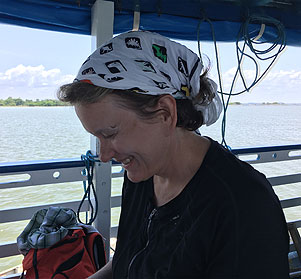Laurie
Anderson Explores How Marine Clams Found Their Way Into one of the World’s
Largest Rivers
The Amazon River is
teeming with life, from solitary four-hundred-pound catfish to shoals of eight-pound
piranha. But in the Amazon basin around Santarem, Brazil—where white water,
clear water, and black water rivers pool together—it’s the ancient tiny
mollusks that have captured the attention of Mines researcher Dr. Laurie Anderson.
The three distinct water
types collect here to create a uniquely rich breeding ground for extreme
aquatic life in one of the world’s largest rivers.

Photo of Dr. Anderson by Mark Siddall, American Museum of Natural History
Anderson’s research
interest is in a little known genus of typically saltwater Corbulidae clam from
the last member of a once diverse radiation in the western Amazon. She has devoted
much of her career to studying this clam and other family members in the fossil
record, and her current research continues to explore its evo...